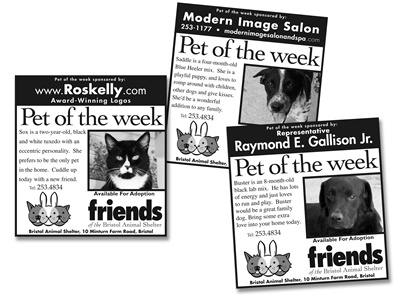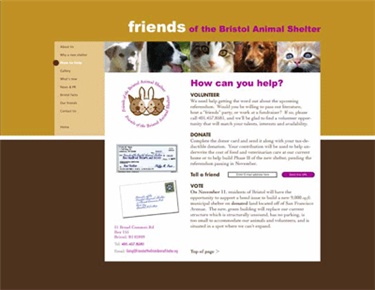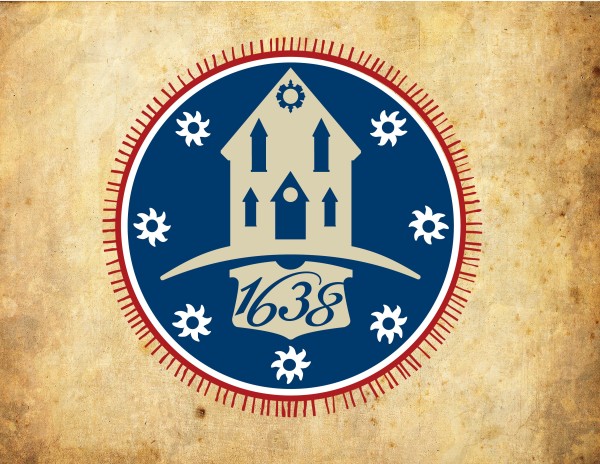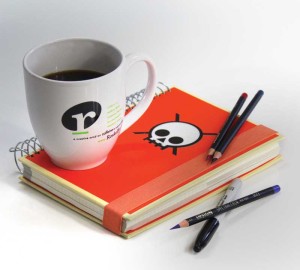THE CHALLENGE:
In May of 2008, The Friends of Foley was a small non-profit organization of animal advocates that came together to bring attention for the need for a new animal shelter in the town of Bristol, Rhode Island. The organization had an annual operating budget of $58K and a small active membership of four people. Without board rotation, leadership was waning and attendance at quarterly meetings averaged 50 percent.
Simultaneously, the physical structure of the municipal shelter had become inadequate.
Built on a landfill 33 years ago, the land had become unstable and the shelter’s foundation was shifting and cracking, allowing water to leak around the windows and through the walls. Support columns were also weighing on dog kennels, prohibiting kennel doors from fully closing.
Proximity to the existing landfill also brought additional problems. Methane gas from the landfill was leaking into the shelter at unsafe levels; the Bristol Animal shelter couldn’t care for small animals because of the high levels of the hazardous gas. When it rained, flooding occurred and sewage drains backed up into the shelter. Rodents from the adjacent landfill found their way into the kennels each day. The only entrance to the building was nine feet away from the industrial truck scale (used by 65 to 100 trucks going to the dump each day), and walking to and from the shelter had become dangerous.
As an older facility, the shelter lacked adequate ventilation and had no quarantine room, allowing disease to spread quickly, threatening healthy animals, staff, volunteers, and the public. As a result, reactive health care for impounded sick and quarantined animals had proven to be counterproductive and costly.
In January, the president of the board went before the town council to request a bond referendum to build a new shelter for the first time. Because current economic conditions were the worst in more than a half century, the town was just completing construction of a new library and embarking on a new public safety complex, the Friends of Foley board expected the council to reject the request again, but to much to its surprise, the town council agreed to put the referendum on the ballot.
With five months before election day, an active board of seven members, a database of only 300 supporters and limited funds in its coffers, the Friends of Foley turned to the public relations/branding team of MK Talbot PR and the Roskelly Group to gain passage of the $2 million bond.
THE PLAN:
After an initial meeting with the president, vice president and secretary of the non-profit the creative team realized that the core team was committed, enthusiastic, and eager to be counseled (a great start considering the limitations of time, infrastructure and support base that the group was faced with). Priority was given to branding the group, defining its mission and message and creating a structure that would help build a grassroots support base.
TACTICS:
Name Change: The first order of business was to rename the group from Friends of Foley to Friends of the Bristol Animal Shelter. By changing the name, the creative team created an obvious link between the non-profit and its mission.
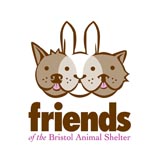 Logo Change: Keeping budget in mind, the four-color logo of the organization’s mascot, a guard dog, was eschewed for a friendlier image that could be reproduced in one or two colors. Another objective of the new logo was to appeal to a wider base of animal lovers, encompassing the image of a cat and rabbit, as well as a dog.
Logo Change: Keeping budget in mind, the four-color logo of the organization’s mascot, a guard dog, was eschewed for a friendlier image that could be reproduced in one or two colors. Another objective of the new logo was to appeal to a wider base of animal lovers, encompassing the image of a cat and rabbit, as well as a dog.
Defining the Message: The health/safety and economic priority of building a new shelter (versus shutting the existing one down and paying for private care as required by law) were boiled down to talking points and a one-page fact sheet.
Visibility: Keeping the organization’s limited budget in mind and the compressed timeline to get the message out, a five-point plan was launched.
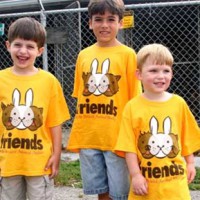 1. Get out to every community event and wear bold t-shirts (in bright yellow) to create conversation where the fact card and support buttons could be distributed. We also worked with a board member who taught marketing at the local university who was able to recruit students to plan and staff the events.
1. Get out to every community event and wear bold t-shirts (in bright yellow) to create conversation where the fact card and support buttons could be distributed. We also worked with a board member who taught marketing at the local university who was able to recruit students to plan and staff the events.
2. Create a self-funding weekly “Pet of the Week” ad in the community newspaper to create brand awareness that would feature a pet available for adoption.
3. Create a “fact of the week” ad, explaining one reason (in detail) why to support the bond.
4. Maximize free media by submitting letters to the editor, opinion/editorials, press releases announcing significant newsworthy developments and getting on-air mentions of the shelter and its good works during Adopt a Shelter Dog Month in October, the month preceding the election.
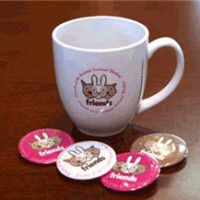 5. Building support for the organization by creating a “friends committee,” headed by hand-selected influential members of the community who hosted informational coffee hours in their home and at the public library.
5. Building support for the organization by creating a “friends committee,” headed by hand-selected influential members of the community who hosted informational coffee hours in their home and at the public library.
THE RESULTS:
Because of heightened visibility of the organization and the concerted effort to bring attention to the unhealthy conditions at the animal shelter, and 59 percent of voters supported the $2 million bond, clearing the way for a new shelter to be built in 2010.
